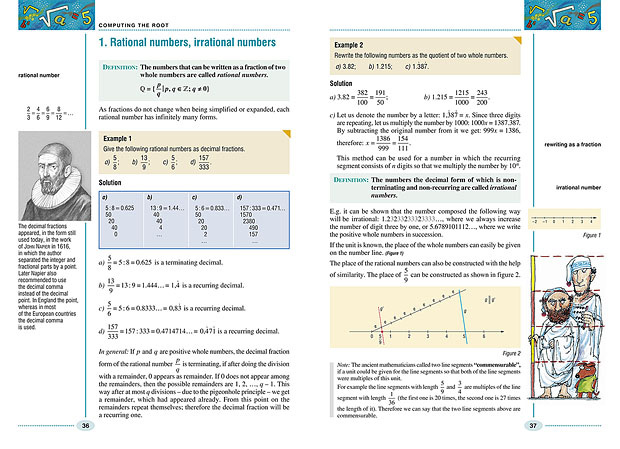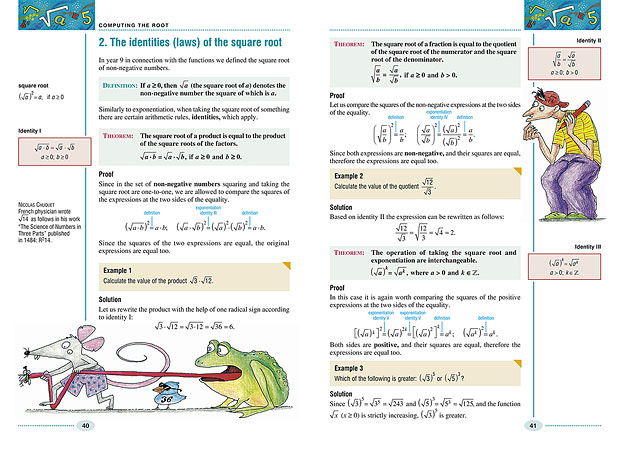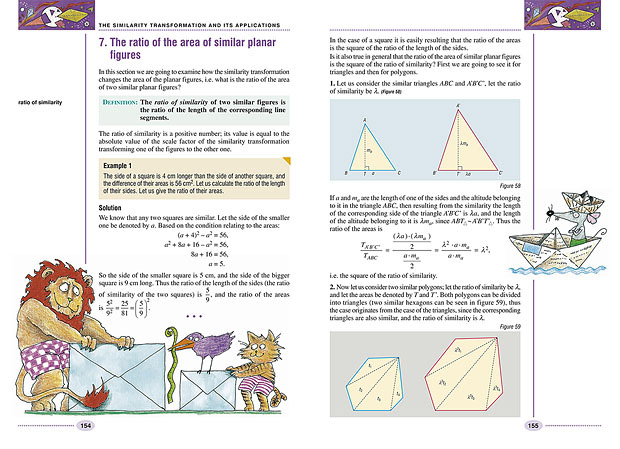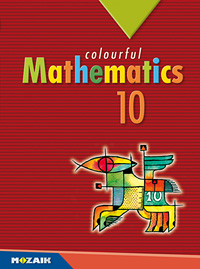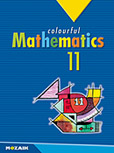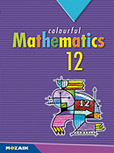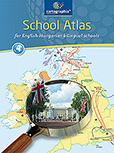| Mathematical reasoning | 10 |
| 1. What does it imply? | 10 |
| 2. The pigeonhole principle | 21 |
| 3. Arrangement (ordering) problems | 29 |
| 4. Picking problems | 32 |
| Computing the root | 36 |
| 1. Rational numbers, irrational numbers | 36 |
| 2. The identities (laws) of the square root | 40 |
| 3. Applying the identities (laws) of the square root | 44 |
| 4. The nth root of numbers | 50 |
| 5. The identities (laws) of the nth root . | 53 |
| The quadratic equation | 60 |
| 1. The quadratic equation and function | 60 |
| 2. The quadratic formula | 64 |
| 3. The zero product form. The relation between the roots and the coefficients | 69 |
| 4. Equations of higher degree which can be reduced to quadratic equations | 74 |
| 5. Quadratic inequalities | 80 |
| 6. Parametric quadratic equations (higher level courseware) | 84 |
| 7. Equations involving square roots | 90 |
| 8. Quadratic simultaneous equations | 96 |
| 9. Arithmetic and geometric mean | 101 |
| 10. Extreme value exercises (higher level courseware) | 106 |
| 11. Problems leading to quadratic equations | 110 |
| Geometry | 116 |
| Widening the knowledge about circles | 116 |
| 1. Reminder | 116 |
| 2. The theorem of the central and inscribed/tangent-chord angles | 117 |
| 3. The theorem of inscribed angles; the arc of viewing angles | 121 |
| 4. The theorem of inscribed quadrilaterals (higher level courseware) | 125 |
| The similarity transformation and its applications | 129 |
| 1. Parallel intercepting lines, parallel intercepting line segments (higher level courseware) | 129 |
| 2. The angle bisector theorem (higher level courseware) | 135 |
| 3. The transformation of central dilation (or homothety) | 137 |
| 4. The similarity transformation | 141 |
| 5. Similarity of figures; the simple cases of similar triangles | 143 |
| 6. A few applications of similarity | 147 |
| 7. The ratio of the area of similar planar figures | 154 |
| 8. The ratio of the volume of similar solids | 158 |
| Trigonometric functions of acute angles | 161 |
| 1. Determining distances with the help of similarity | 161 |
| 2. Trigonometric functions of acute angles | 164 |
| 3. Relations between the trigonometric functions of acute angles | 168 |
| 4. Trigonometric functions of special angles | 172 |
| 5. Determining several data of a triangle with the help of trigonometric functions | 175 |
| 6. Calculations in the plane and in space with the help of trigonometric functions | 180 |
| Vectors | 184 |
| 1. The concept of a vector; the sum and the difference of vectors; scalar multiplication of vectors (reminder) | 184 |
| 2. Expressing vectors as the sum of components in different directions | 188 |
| 3. Applying vectors in the plane and in space | 194 |
| 4. Vectors in the coordinate system, the coordinates of a vector, operations with vectors given with coordinates | 199 |
| Trigonometric functions | 204 |
| 1. The definition and the simple properties of the sine and the cosine function | 204 |
| 2. The graph of the sine function | 209 |
| 3. The graph of the cosine function, equations, inequalities | 214 |
| 4. The tangent and the cotangent function | 221 |
| 5. Compound exercises and applications . | 228 |
| 6. Geometric applications | 232 |
| Calculation of probability | 238 |
| 1. Events | 238 |
| 2. Operations with events | 243 |
| 3. Experiments, frequency, relative frequency, probability | 248 |
| 4. The classical model of probability .. | 251 |
